產品列表
Modular data centers: Faster, more flexible and more energy-efficient in the data centers
Author / Editor: Astrid Hennevogl-Kaulhausen* / Ulrike Ostler**

What do modular UPS systems provide? What are the advantages of modular cooling systems? Astrid Hennevogl-Kaulhausen, Head of Mission Critical Infrastructure Solutions (MCIS), UPS Sales Germany, Delta Energy Systems, has some answers.
What differentiates modular data centers from conventional approaches, and what concrete benefits do they provide for the company? For which requirements are they the ideal solution? How do they need to be designed in order to provide their full technical and economic benefits?
Cloud computing, big data, and the Internet of Things (IoT) require data centers with significantly higher performance and flexibility. The requirements range from simple and short planning phases, to rapid deployment of applications and seamless scaling during ongoing operations, to greater energy efficiency and cost-effectiveness.
One approach for managing increasing complexity and greater requirements is the building of modular data centers. In practice, this means: Cooling, power supply and energy management systems are divided into individual components and modules. Any sub-area of the data center is designed according to a uniform standard based on its size, workload and configuration. This ensures fault-free, independent operation without shared resources.
Three advantages of modular data centers at a glance:
-
High standardization, higher quality
High standardization of components and processes enables mass production; this means lower costs, higher quality, easier repair and shorter lead time. -
High expandability, greater flexibility
The modular structure allows for easy expansion and adjustment of current IT requirements. The installation, updating and reconfiguration of independent components and interfaces makes expansions much cheaper. -
Shorter Mean Time to Repair (MTTR)
Modularity, flexibility and plug-in connection features mean that many operations - e.g. pre-cabling and distributor equipment before delivery or repairs of standard modules - can be performed by the manufacturer with optimum quality and cost effectiveness. A module that is configured or repaired in the plant is very unlikely to be the origin of any faults.
What are the benefits from standardization?
-
Save time and costs
The high degree of standardization in modular data centers is one of their most important advantages: It is about 90 percent, making it the most important reason for short deployment times, cost efficiency and scalability. When it comes to costs, there are three primary factors that lead to savings compared to conventional data centers. The first is the efficient use of space and the associated reduction in construction costs, the second is reliable forecasting of module costs, and the third is high energy efficiency.
Data centers built using prefabricated and standardized components already have significantly cheaper construction costs: The costs of design, management and turnkey construction are 30 percent below those for conventional data centers. Pure construction time is usually just a few weeks. Previous estimates from construction to start-up were usually around 400 days; for modular data centers, this period is just a few months.
Mass production of the modules and standardized connection technology are the main reasons for the shorter construction times and faster start-up: The modules are tested in advance, thereby drastically reducing the time for configuration and connection on-site. Modular data centers also provide configuration solutions such as N, N + 1 and 2N, and they support power reserves according to customer requirements: This achieves the highest Tier 4 of data center certification level by TIA-942. -
High quality from high standardization
The way in which cables are laid and managed also has a direct impact on the setup and stability of the entire IT system and the costs. In the modular data center, all data and power cables are standardized and preconfigured so that they can be laid, managed and repaired easily and cost-effectively.
In addition, thanks to the modular, standardized and highly-integrated design, modular data centers are even more stable – especially if the modules come from the same provider and are configured and tested before start-up. All modules such as power supply, cooling, racks, cabling, and a monitoring system for energy and ventilation management are designed to interact perfectly.
Modular UPS systems – Not only scalable, but energy efficient
Lower power costs, reliable energy supply
The power costs in the data center make up the largest component of the total cost of ownership (TCO). The PUE (Power Usage Effectiveness – the total power consumption of a data center divided by the IT power consumption) is usually high in conventional data centers. It is often at around 2.0 or higher. This means: only half of the energy is spent on the IT workload. The other half is consumed by the physical and critical infrastructure such as power supply, cooling and lighting.

Figure 1: Modular UPS for seamless expansion of the data center
Modular data centers are much more effective: they allow optimal coordination between the capacity and workload of the energy and cooling systems to improve efficiency and to avoid excessive configuration. With modular uninterruptible power supplies (UPS), for example, it is easy to simply increase the number of power supply modules when you need to expand the data center. This means: further growth, makes a "seamless expansion" of the UPS easy to implement (see Figure 1).
To save energy, the efficiency of the components must be increased and the workload must be reduced. Modern UPS can be used to significantly reduce power costs compared to conventional UPS.
Data centers are usually installed with N+X redundant power supplies or even 2N configurations (dual BUS) to ensure reliable operation. This means that the percentage of the workload is usually only around 30 to 40 percent, or even less.

Figure 2: High efficiency at low workload: A high-efficiency UPS uses approximately 5 percent less power than a conventional UPS.
According to a report in 2013 from the Gartner market research company, in addition to UPS efficiency at full workload, it is also particularly important to also consider the efficiency curve (see Figure 2) at a workload of between 20 and 100 percent in order to identify the ideal state of "high efficiency at low workload".
If you take into account the workload differences in the data center for day and night, then a highly-efficient modular UPS – for example, with a capacity of 200 kVA – consumes about 5 percent less power than a conventional UPS (see: table 1).
Table 1: Calculation and comparison of UPS power costs
|
Intelligent cooling technology
Modular data centers use separate hot and cold aisles and use cooling units in series to ensure the cooling of compact integrated racks and to reduce cooling energy losses. The density of individual racks can be increased by more than 20 kilowatts.
If you attach blanking plates at the rack locations where no servers are installed, 95 percent of the cold air passes directly via the cold aisles in the server racks. The hot air emitted from all racks is then fed back through the cooling unit and does not flow to the front of the rack. A containment system for the cold or hot aisle in the modular data center increases utilization and reduces consumption.

Figure 3: Simulation of air flow in a data center with two "hot aisle containments". It is clear that there is no mixing of hot and cold air here. The hot air is retained in the contained hot aisle.
This "in-row" cooling method improves cooling performance, because the cold air is guided directly to the hot points. Furthermore, the cold aisle containment is isolated to prevent the mixing of cold and hot air and to prevent the formation of hot islands (see: Figure 3). Cooling performance in modular data centers is 12 percent greater compared to conventional data centers. When chilled water type cooling and free cooling are combined, the PUE can be reduced to less than 1.5.
Last but not least, intelligent management systems help reduce energy costs. For example, big data analyses can be used to create energy savings plans and continuously adapt them dynamically.
Higher power density in the rack
As the central component of the data center's IT service, the rack consists of the physical structure, the support structure, installation and compatibility of the IT equipment, thermal management (air inlet, air outlet, air flow management) power distribution (dual power supply, rack-mountable distribution cabinet), cable management (power and data cables) and much more.
Thanks to the standardization of these components, it is possible to increase the packing density of the racks in modular data centers – they need about 35 percent less energy, and they deliver the same performance over a smaller area. This means that in a few years, a modular data center covering an area of around 800 m² and with a heat output of 20 kW per rack will achieve the same performance values as a 3,000 m² data center today. The savings – based on construction costs – are between 700,000 and 2 million euros.
Advantages of modular data center solutions from Delta
-
Modular data centers use an overhead wiring system and the internal cabling rack is attached to the top of the modular racks. High-voltage and low-voltage electricity are separated.
-
The power distribution cabinets provide the power supply for the network cabinets.
-
The battery/rechargeable power pack can be installed in the battery compartment.
-
Modular data centers are monitored with or without the color touch panel that is assigned to each module. An information upload is run via touch panel for the former or via Data Acquisition Mainframe (DAM) for the latter.
-
Modular data centers are equipped with class B and C lightning protection systems.
-
The touch panel (optional) displays information about the power distribution cabinets, precision cooling, the environment in the racks, water leaks, temperature, humidity, smoke detection, door status and much more.
-
The UPS and the precision cooling have the same shape, size and color. All cabinets have a highly integrated structure.
-
All UPS, precision cooling, and monitoring systems are developed by Delta. The core technologies and expertise are from Delta's research and development center.
-
The power supply systems, power distribution and batteries for small and medium-sized modular data centers are integrated within a single cabinet (Modulon DPH 75kW series UPS) in order to reserve more valuable space for major IT equipment.
However, the growing computing power per rack requires special cooling and power supply systems. This requires a combination of cold/hot aisle concepts combined with water cooling and modular "Power Distribution Units" (PDUs) in the rack. This makes it possible to reduce the energy requirements of the systems by about one-third per rack.
Modular design: “pay as you go”
The new modular structures offer the greatest possible flexibility to meet future challenges. Example: If you outsource specific applications to the cloud, this changes the demand for energy in the data center. Because reduced energy consumption brings greater savings potential, the UPS and the cooling solution must be adapted to the power requirements.
For modular UPS systems, you can use individual power modules to increase or reduce power capacity, if necessary, without affecting N + 1 redundancy or available backup time. If the cooling solution is part of the "modular design", this can also be adapted with a scalable approach. The main advantage is the ability to implement just as much infrastructure as is required, while maintaining the option to flexibly adapt the system in all areas – power, cooling and management.
There are now many options for implementing a modular data center concept. These range from individual rack module solutions, to containers as entire data center units, to energy cells. Procurement of modular UPS is often the first step, as this facilitates and simplifies conversion of the data center. In all these approaches, the modular design ensures predictable construction, installation, service and maintenance cost.
* Astrid Hennevogl-Kaulhausen is Head of Mission Critical Infrastructure Solutions (MCIS)/UPS Sales Germany, Delta Energy Systems
** Ulrike Ostler is the chief editor of DataCenter insider, a print and online media in Germany focusing on IT and data center areas
Delta, a global leader in thermal and power management solutions, will reveal at CeBIT 2017 its innovative modular data center solutions that address high-end computing requirements in the age of the Internet of Things (IoT). Delta’s InfraSuite modular data center is a smart and flexible architecture suitable for small and medium enterprise applications. In addition to the integration of main systems of power, cooling, racks and monitoring, the cold or hot aisle containment also provides superior air flow management to enhance cooling efficiency.
We welcome you to visit and see our brand-new containerized edge datacenter solutions, power management, efficient cooling solutions and DCIM live demonstration at our Delta stand located at Stand D83, Hall 12 during CeBIT 2017 in Hannover, Germany from March 20th to 24th.












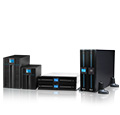

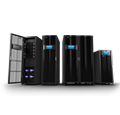

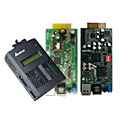



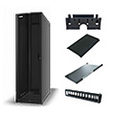
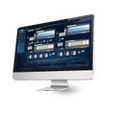











.gif)

.gif)
